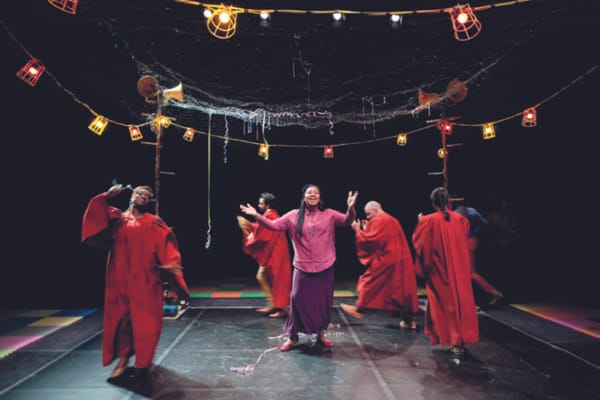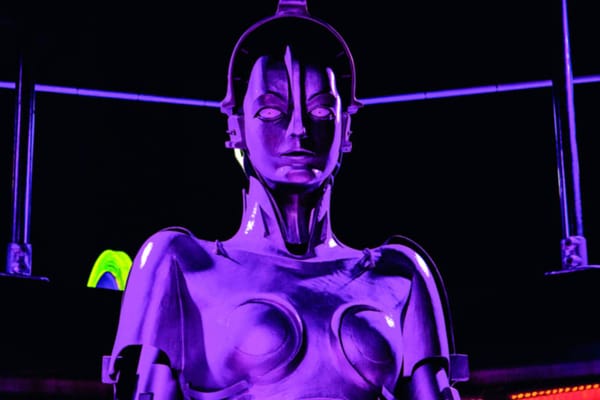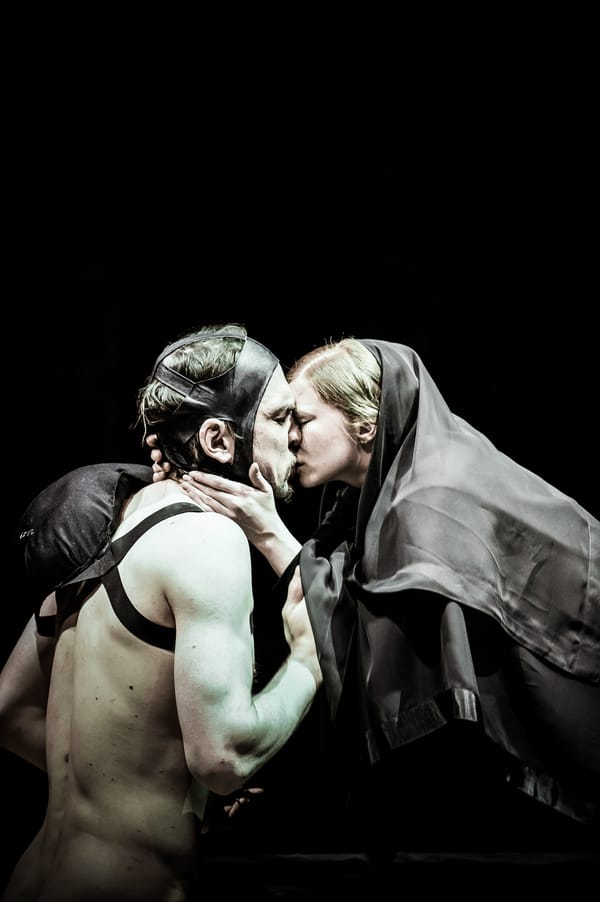Blanca Li's Robot | A confusing hodgepodge of man and machine
Blanca Li's show mixes human dancers with robot androids, but its message seems unclear

There is little doubt that technology has pervaded every inch of our modern lives. From people plugged in on their daily commutes, to the seas of smartphones at concerts, we seem to be constantly immersed in gadgetry. But is that a good or bad thing? This question has become something of a hot topic in recent months, with shows such as Westworld and Black Mirror exploring the darker consequences of a future dominated by technology. Choreographer Blanca Li takes a more playful approach with Robot, a production filled with dancers both human and humanoid.
It's an interesting premise. Sure, robots can perform calculations with superhuman speed and precision – Google's AlphaGo AI has even beaten us at Go – but how will they fare with something as uniquely human as dancing? Surely creative expression remains very much our domain. Unfortunately, Robot doesn't deliver on its potential for an interesting dialogue between humans and robots; whatever message Li intended to convey is lost somewhere between the strange sequences, and the dance pieces that went on for longer than they should have.
In all fairness, the eight human dancers performed with skill and ease; their stamina for carrying such energetic moves for over an hour was quite commendable. But despite the energetic choreography, the moves felt rather monotonous and repetitive – dare I say, robotic?
Robot's selling point is its generous use of actual robots. The orchestra is self-playing, composed of 10 mechanical instruments by Japanese art group Maywa Denki. The musical prototypes are rather whimsical: percussion instruments dominate, although there is a flower-shaped marimba and an automated concertina (which produced a dreadful screeching note). While the soundtrack, composed by Tao Gutiérrez, was quite enjoyable in parts, after half an hour of drumbeats and mechanical beeping it started to become quite headache-inducing.
The Nao robots were definitely the selling point of Robot. Infantile, with round faces and LED eyes blinking confusedly around, they seemed designed to appeal to our tendency to anthropomorphosise electronic devices. Nao #1 was gently helped out of his box by one of the dancers, like a parent teaching a child his or her first steps. They then performed a short dance together, with the dancer lifting the tiny robot above his head in an amusing pas de deux.
I suspect that the robots' instability was down to the limitations of current robot-dancing technology rather than any intention by the choreographer.
This was followed by a choreographed routine carried out entirely by seven Nao models. Or rather, the Nao robots made a brave attempt at finishing their routine, only to fall down every few moves and struggle back to their feet. This delighted the audience, with every new tumble eliciting coos and ‘aahs’. Was it intentional, or were the Nao robots genuinely incapable of keeping balance? If the former, catering to the audience’s desire to see robots as harmless and bumbling would have been some clever lampshading by Li. However, I rather suspect that it was down to the limitations of current robot-dancing technology rather than any intention by the choreographer.
As the production wore on, it all struck me as a tad juvenile – the cutely inept Naos, the low-tech mechanical orchestra, the human dancers who seemed to play second string to the dancing robots. Finally, the curtains closed on a giant tangle of machinery – variously blinking, beeping, and bumping into each other. A stray Roomba wandered to the edge of the stage, and was left outside when the curtains closed. By the end of the performance, I felt just as confused.









